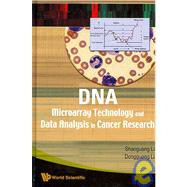
| Preface | p. v |
| Introduction of Authors | p. vii |
| DNA Microarray Technology | p. 1 |
| Experimental Procedure | p. 2 |
| Experimental Design | p. 4 |
| Quality Control | p. 6 |
| Interpretation of DNA Microarray Data | p. 8 |
| Advantages and Disadvantages | p. 8 |
| Applications of DNA Microarray Technology in Cancer Research | p. 11 |
| Solid Tumors | p. 11 |
| Blood Cancers | p. 12 |
| Our DNA Microarray Study Using Mouse Model of BCR-ABL-Induced Leukemia | p. 13 |
| Leukemia mouse model study | p. 15 |
| Cell line study | p. 19 |
| Current Analytical Methods of DNA Microarray Data | p. 21 |
| Experimental Design | p. 21 |
| Method | p. 21 |
| Robust multi-chip averaging (RMA) | p. 21 |
| iterPLIER | p. 22 |
| Quality Control Diagnostics | p. 25 |
| Saturation | p. 25 |
| Transformed intensities across arrays | p. 28 |
| Normalized intensities across arrays | p. 29 |
| Scatterplot of normalized intensities | p. 30 |
| Average MA plot of normalized intensities | p. 31 |
| Statistical Analysis | p. 32 |
| Analysis of variance (ANOVA) model | p. 32 |
| Contrasts | p. 33 |
| Coefficient of Variation Analysis | p. 36 |
| A Novel Method for DNA Microarray Data Analysis: SDL Global Optimization Method | p. 37 |
| Research Subjects | p. 38 |
| Experimental Design | p. 39 |
| Rationale | p. 39 |
| Fold Change Analysis | p. 40 |
| More Information on SDL Global Optimization | p. 51 |
| Genetic algorithms (GAs) | p. 53 |
| SDL global optimization algorithms | p. 54 |
| Applications of the SDL Global Optimization Method in DNA Microarray Data Analysis | p. 55 |
| Leukemia Cell Line Study | p. 55 |
| Introduction | p. 55 |
| Datasets | p. 55 |
| Analysis strategies | p. 55 |
| Discussion and conclusion | p. 62 |
| Analyses of Publicly Available Human Microarray Data | p. 63 |
| Introduction | p. 63 |
| Datasets | p. 70 |
| Overall Methodology | p. 71 |
| Orthogonal arrays (OAs) and sampling procedure | p. 71 |
| Objective function | p. 74 |
| Search space reduction for global search | p. 76 |
| Mathematical form of SDL optimization | p. 80 |
| Multi-subset class predictor | p. 82 |
| Validation (predicting through a voting mechanism) | p. 83 |
| Experimental Results | p. 83 |
| Discussion | p. 90 |
| Conclusion | p. 99 |
| General Discussion and Future Directions | p. 101 |
| References | p. 105 |
| Index | p. 117 |
| Table of Contents provided by Ingram. All Rights Reserved. |
The New copy of this book will include any supplemental materials advertised. Please check the title of the book to determine if it should include any access cards, study guides, lab manuals, CDs, etc.
The Used, Rental and eBook copies of this book are not guaranteed to include any supplemental materials. Typically, only the book itself is included. This is true even if the title states it includes any access cards, study guides, lab manuals, CDs, etc.